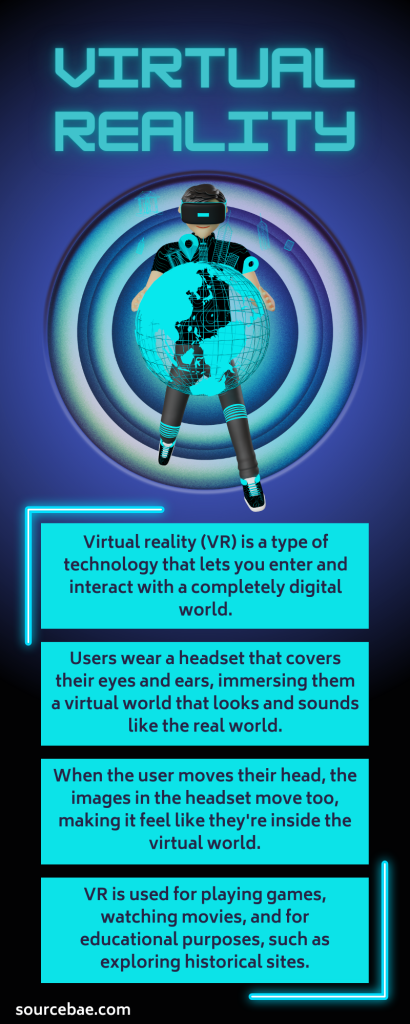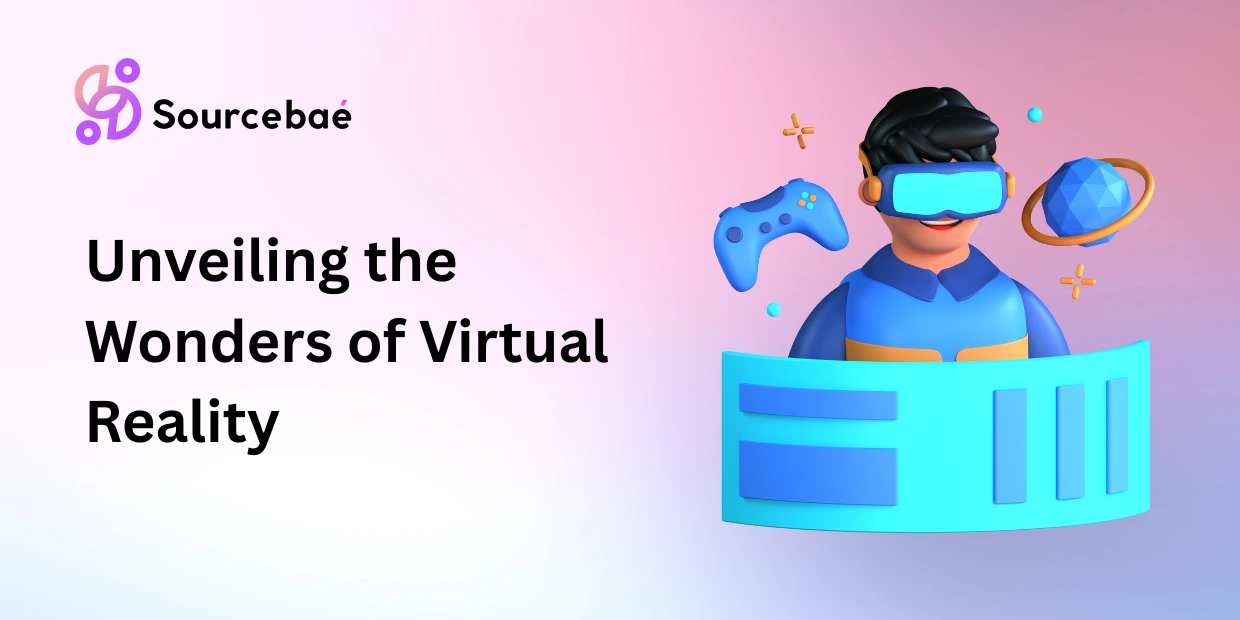Welcome to the realm of virtual reality (VR), an extraordinary technology that has transformed the way we interact with digital content and our environment.
In this in-depth article, we’ll take you on a journey through the virtual landscape, exploring its various applications, benefits, challenges, and future prospects.
So, fasten your seatbelts as we embark on an exciting adventure into the world of virtual reality.
Unveiling the Wonders of Virtual Reality

Virtual reality, often abbreviated as VR, refers to a simulated environment that can be similar to or completely different from the real world. It immerses users into a digital realm using a combination of cutting-edge hardware and software, creating a sensory-rich experience that engages multiple senses such as sight, sound, and touch. The user becomes an active participant in this virtual environment, able to interact and manipulate objects as if they were physically present.
The Evolution of Virtual Reality
Virtual reality has come a long way since its inception. The concept dates back to the 1960s, but it wasn’t until the late 20th century that the technology began to take shape. Early VR systems were cumbersome and limited in capability, but rapid advancements in computing power, graphics, and motion tracking have propelled virtual reality into a new era of accessibility and realism.
Applications of Virtual Reality
Gaming: A Paradigm Shift in Interactive Entertainment
Virtual reality has revolutionized the gaming industry by providing gamers with an unprecedented level of immersion. LSI Keyword: “virtual reality gaming”
Gone are the days of conventional gaming experiences; VR transports players into the heart of the action. With VR headsets, motion controllers, and haptic feedback devices, players can explore fantastical worlds, engage in thrilling adventures, and even compete against opponents from around the globe—all from the comfort of their homes.
Training and Education: Bridging the Gap between Theory and Practice
Virtual reality has found a valuable place in training and education. LSI Keyword: “VR in education and training”
From medical procedures to military simulations, VR allows learners to practice in realistic environments without real-world consequences. Students can dissect virtual bodies, pilots can simulate flights, and astronauts can train for space missions, all in a risk-free and controlled setting.
Healthcare: Healing through Immersion
The healthcare industry has embraced virtual reality for both therapeutic and diagnostic purposes. LSI Keyword: “virtual reality healthcare applications”
For patients dealing with pain, anxiety, or rehabilitation, VR experiences offer distraction and relaxation techniques that can enhance the healing process. Additionally, VR can simulate medical scenarios, enabling medical professionals to refine their skills and decision-making abilities.
Architecture and Design: Visualizing the Unbuilt
Architects and designers have harnessed VR to revolutionize the way they conceptualize and present their creations. LSI Keyword: “virtual reality in architecture”
Virtual reality allows clients and designers to walk through unbuilt spaces, experiencing the scale, design, and ambiance firsthand. This immersive experience aids in making informed decisions and adjustments before construction begins.
Virtual Tourism: Travel without Boundaries
Dream of exploring iconic landmarks or far-off destinations? VR has opened up the world of virtual tourism, allowing individuals to experience places they might never physically visit. LSI Keyword: “virtual reality tourism”
Through virtual travel experiences, users can wander through ancient ruins, stroll along picturesque beaches, and even climb towering mountains, all from the comfort of their living rooms.
Benefits of Virtual Reality
Enhanced Learning and Retention
Research has shown that immersive experiences foster better learning and information retention compared to traditional methods. The interactive nature of VR engages learners and creates memorable educational experiences.
Overcoming Phobias and Anxiety
Virtual reality exposure therapy has proven effective in treating various phobias and anxiety disorders. Controlled exposure to feared situations within a virtual environment helps individuals confront and manage their fears.
Remote Collaboration
Virtual reality enables seamless collaboration among individuals located in different parts of the world. Professionals can participate in virtual meetings, workshops, and design reviews as if they were physically present.
Empathy and Perspective-Building
VR experiences can foster empathy by allowing users to step into the shoes of others. This is particularly valuable for promoting understanding among diverse groups and raising awareness about different life experiences.
Challenges and Future Prospects
Motion Sickness and Discomfort
While VR has made significant progress, some users still experience motion sickness and discomfort during prolonged use. Researchers are actively working to minimize these side effects through improved hardware and software design.
Accessibility and Affordability
High-quality VR hardware can be expensive, limiting access for some individuals. However, as technology advances and prices drop, VR is becoming more accessible to a broader audience.
Ethical and Psychological Considerations
As VR becomes more realistic, ethical and psychological concerns arise. Striking a balance between immersive experiences and user well-being is a challenge that both developers and researchers are addressing.
Augmented Reality (AR) Integration
The future of VR may involve integrating it with augmented reality (AR) technology. This blend could offer users the best of both worlds: seamless integration of digital content with the physical environment.
FAQs
Q: Can virtual reality be used for professional training?
A: Absolutely! VR is widely used for professional training in industries such as healthcare, aviation, and military.
Q: Are there any health risks associated with prolonged VR use?
A: Prolonged VR use can lead to issues such as eye strain and motion sickness. However, taking regular breaks and using high-quality VR equipment can mitigate these risks.
Q: Can VR be used for social interactions?
A: Yes, social VR platforms allow users to interact with friends and strangers in virtual environments, fostering a sense of presence and connection.
Q: What role does VR play in the entertainment industry?
A: VR has transformed the entertainment industry by offering immersive gaming experiences, interactive storytelling, and virtual concerts.
Q: Is virtual reality only for gaming?
A: No, while gaming is a prominent application, VR is also used in education, healthcare, design, tourism, and more.
Q: What does the future hold for virtual reality?
A: The future of VR is promising, with ongoing advancements in technology, increased accessibility, and integration with other emerging technologies.
Conclusion: Embrace the Virtual Frontier
Virtual environment has undoubtedly redefined the boundaries of human experience. From gaming and education to healthcare and architecture, its applications continue to expand, offering opportunities to engage with the digital world in unprecedented ways.
As VR technology evolves and becomes more accessible, the potential for transformative experiences is limitless. So, whether you’re exploring ancient ruins, training for a new career, or embarking on a fantastical adventure, virtual reality is your passport to a world without limits.





